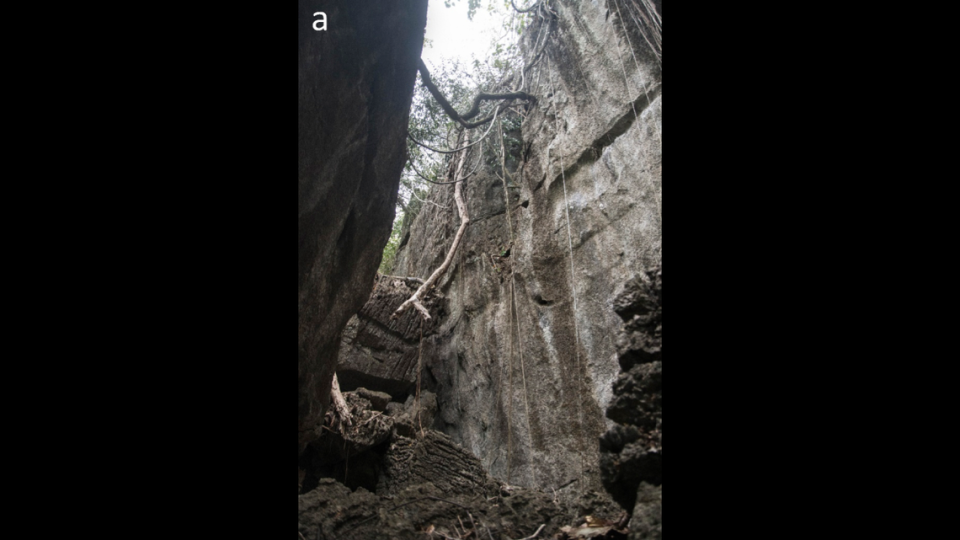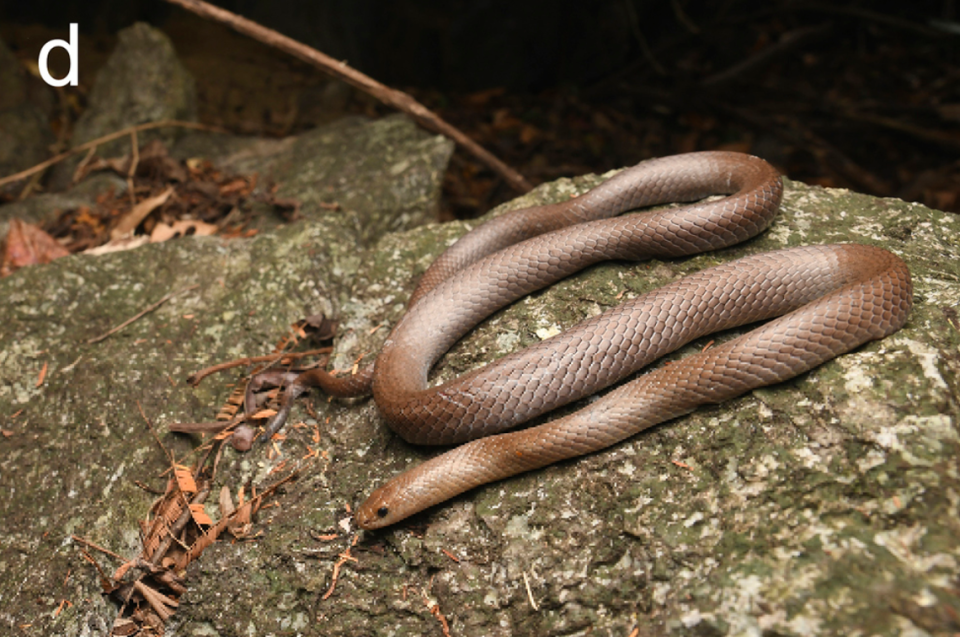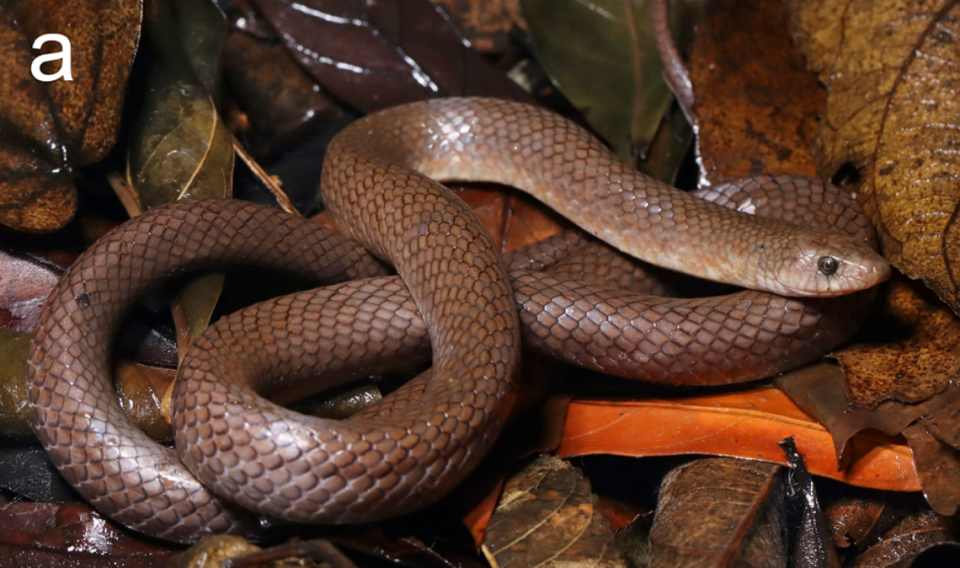Cave creature — with ‘blade-shaped’ teeth — discovered as new species in Thailand
Two researchers from the United Kingdom “embarked on an expedition” in a southern region of Thailand last year in the hopes of finding elusive snakes.
Harry Ward-Smith and Rupert Grassby-Lewis, the former an unaffiliated herpetologist from London and the latter a herpetologist with Explore Herpetology, went to the karst mountains and started their search, Ward-Smith said in an April 26 Facebook post.
The duo hoped to find T. cillaris, a recently described new species said to be living in the area, but their search turned up empty, Ward-Smith wrote.
However, they didn’t know they would be making a more significant discovery.
As they reached the bottom of a cliff in the mountains, the researchers saw a snake about 50 feet up the face of the rock, Ward-Smith wrote.
Ward-Smith knew immediately they were looking at something unique, and made a difficult decision.
“This was incredibly risky but I had no option but to free solo (climbing talk for no ropes) as I knew the importance of this snake and was not going to let it escape us under any circumstance,” Ward-Smith wrote.

Discover more new species
Thousands of new species are found each year. Here are three of our most eye-catching stories from the past week.
→Volcanic ocean creature — with 'long' legs — discovered in Japan. It's a new species
→'Flat'-headed creature — with multicolored eyes — discovered as new species in China
→Nocturnal creature — a 'rapidly-running' predator — discovered as new species in India
Photos of the snake he took confirmed it was a new species.
“I am ecstatic to announce the description of a new species of Kukri Snake to southern Thailand: Oligodon speleoserpens, the Cave Kukri Snake,” Ward-Smith wrote.
Specimens of the snake were later collected and studied, and scientists from Thailand, Vietnam, Russia and the United States published the discovery in the journal Vertebrate Zoology on April 26.

“O. speleoserpens is endemic to the limestone karst mountains of Southern Trang and Satun (on the southern) peninsula in Thailand,” Ward-Smith wrote. “It is especially adapted to life in this harsh environment, with strongly keeled ventral scales enabling it to climb vertail rock faces. Its name comes from the holotype (example animal) being found in a limestone cave.”
The body of the snake is medium brown, slightly lighter toward the head, with black borders on the individual scales, photos from the study show.
The species has an “oblong-shaped” head and a shortened snout, according to the study, distinguishing it from other known Oligodon species.
The Cave Kukri Snake also has eight teeth in its jaw, and the back three teeth are “enlarged” and “blade-shaped,” the researchers said.

“This is the first species description I have been a part of and feel very honored to have discovered this species alongside so many great colleagues,” Ward-Smith wrote. “And it’s most amazing to be a new Oligodon, a genus often disregarded by many but very close to my heart.”
He also said the snake comes from an “extremely rare clade” of Kukri snakes, meaning a group of animals that all come from the same common ancestor, so little is known about them as a whole.
Karst is a rock formation from limestone, a soft rock that erodes easily when exposed to water, according to National Geographic. Rain then washes away the loose stone layer by layer, leaving towering pillars of stone.
River creature — with a white ‘collar’ — discovered as a new species in Colombia
Ocean predator missing since 1800s appears in fishers’ net in Chile. Take a look
Scaly clawed creature found resting in rotten log at India forest. See the new species
Cave-dwelling creature — found in Amazon — can’t make a sound. See ‘unique’ new species

